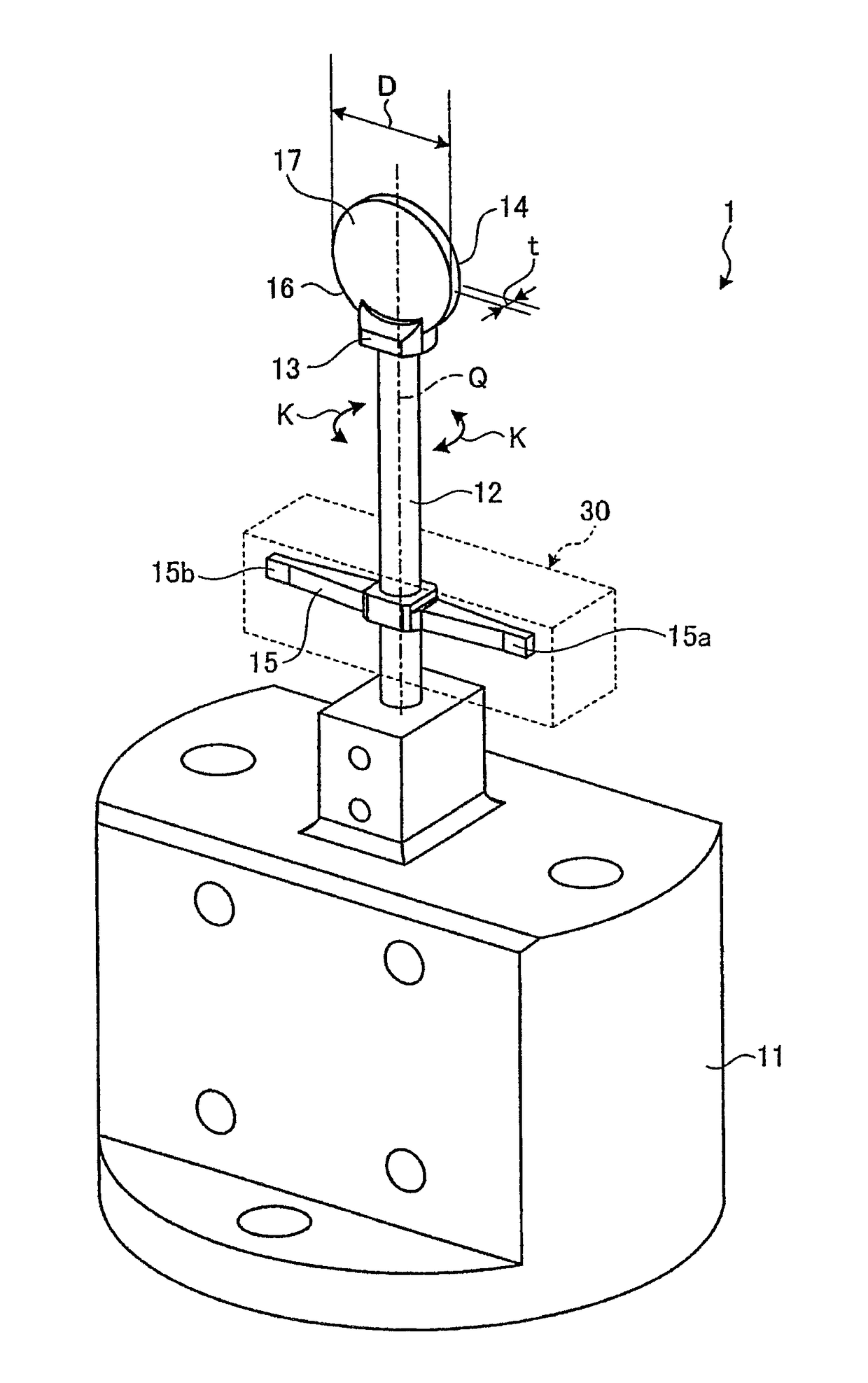Scanning mirror
a scanning mirror and mirror technology, applied in the field of scanning mirrors, can solve the problems of difficult to enhance energy density, shorten service life, and difficult to apply laser beams to a wide region, and achieve the effects of reducing the moment of inertia of the scanning mirror, reducing the moment of inertia, and small effective reflection rang
- Summary
- Abstract
- Description
- Claims
- Application Information
AI Technical Summary
Benefits of technology
Problems solved by technology
Method used
Image
Examples
example 4
[0039]In Example 4, sapphire having a specific rigidity of 87.5 GPa·cm3 / g was used as material for the mirror base 16. The other conditions were the same as in Example 1.
example 1
PRIOR ART EXAMPLE 1
[0040]In Prior Art Example 1, quartz glass having a specific rigidity of 32.7 GPa·cm3 / g was used as material for the mirror base 16. The other conditions were the same as in Example 1.
example 5
[0041]In Example 5, the mirror base 16 was excited at an excitation frequency of 10 kHz and with a mechanical deflection angle of π / 360 rad. The value of f2·θ in this case is 873 krad / s2. The other conditions were the same as in Example 1.
PUM
| Property | Measurement | Unit |
|---|---|---|
| frequency | aaaaa | aaaaa |
| thickness | aaaaa | aaaaa |
| thickness | aaaaa | aaaaa |
Abstract
Description
Claims
Application Information
 Login to View More
Login to View More - R&D
- Intellectual Property
- Life Sciences
- Materials
- Tech Scout
- Unparalleled Data Quality
- Higher Quality Content
- 60% Fewer Hallucinations
Browse by: Latest US Patents, China's latest patents, Technical Efficacy Thesaurus, Application Domain, Technology Topic, Popular Technical Reports.
© 2025 PatSnap. All rights reserved.Legal|Privacy policy|Modern Slavery Act Transparency Statement|Sitemap|About US| Contact US: help@patsnap.com



